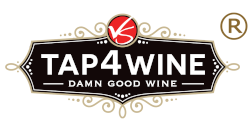
Italian wine, renowned for its diversity, quality, and rich cultural heritage, holds a special place in the hearts of wine enthusiasts worldwide. With a winemaking history that spans thousands of years, Italy has become a captivating tapestry of vineyards, grape varieties, and regional traditions. In this blog post, we embark on a journey through time to explore the fascinating history of Italian wine.
- Ancient Origins: The story of Italian wine begins in antiquity, with evidence of winemaking dating back to the Etruscans and Greeks who settled on the Italian peninsula. The Etruscans, in particular, played a crucial role in developing viticulture and winemaking techniques. They cultivated vineyards and recognized the importance of wine in their religious and social practices.
- The Roman Influence: The Roman Empire profoundly shaped the development of Italian wine. The Romans embraced viticulture, expanding vine cultivation throughout their vast empire. They introduced advanced techniques such as vine training, grafting, and barrel aging, which greatly enhanced the quality of Italian wines. Some of the most famous Italian wine regions today, such as Tuscany and Campania, have their roots in Roman winemaking traditions.
- Monastic Legacy: During the Middle Ages, the Catholic Church and its monastic orders played a significant role in preserving and advancing winemaking knowledge. Monasteries became centers of viticultural excellence, with monks meticulously tending to vineyards and perfecting winemaking techniques. Wines produced by monastic communities gained prominence and became highly sought-after throughout Europe.
- Birth of the Wine Guilds: In the late Middle Ages and the Renaissance, wine guilds emerged as influential institutions in Italian winemaking. These guilds, comprised of wine producers and merchants, regulated the production, trade, and quality of wines. They established standards, protected regional winemaking traditions, and ensured the integrity of Italian wines. Many of these guilds laid the foundation for the renowned wine appellations that exist today.
- The Classification System: Italy’s modern wine classification system owes its origins to the late 19th century. In an effort to protect and promote regional wines, the Italian government introduced the Denominazione di Origine Controllata (DOC) and Denominazione di Origine Controllata e Garantita (DOCG) labels. These labels signify wines that adhere to specific production regulations and meet strict quality standards, giving consumers confidence in the origin and quality of Italian wines.
- Innovation and Global Recognition: In recent decades, Italian winemakers have embraced innovation and experimentation while honoring the country’s winemaking heritage. They have revived ancient grape varieties, implemented sustainable farming practices, and adopted modern winemaking techniques. These efforts have propelled Italian wines onto the global stage, garnering recognition and admiration from wine enthusiasts worldwide.
The history of Italian wine is a captivating tale of passion, tradition, and innovation. From its ancient origins rooted in Etruscan and Roman civilizations to the modern-day quest for excellence, Italian winemakers have crafted a diverse tapestry of wines that reflect the country’s rich cultural heritage and diverse terroirs. As you savor a glass of Italian wine, let its storied history transport you to ancient vineyards and vine-covered hillsides, where generations of winemakers have poured their hearts and souls into crafting the elixir we enjoy today. Cheers to the enduring legacy and extraordinary flavors of Italian wine! Salute!

Recent Comments